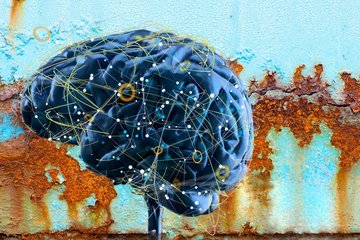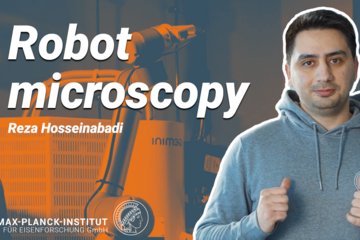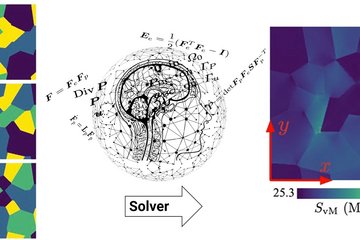All genres
861.
Talk
Effect of local stress state on the glide of ½a₀<111> screw dislocation in bcc-Fe. 1st Austrian-German Workshop on Computational Materials Design, Kramsach, Austria (2012)
862.
Talk
Structural interfaces enable function-related variations of properties in the exoskeleton of crustacea. Ringberg Symposium 2012: Generation of Inorganic Functional Materials Implementation of Biomineralization Principles, Rottach-Egern, Germany (2012)
863.
Talk
The influence of magnetic excitations on the phase stability of metals and steels. ADIS2012: Thermodynamics and Kinetics, Ringberg, Germany (2012)
864.
Talk
Thermodynamics and kinetics of H interaction with vacancies in fcc metals. ADIS 2012 Workshop, Ringberg, Germany (2012)
865.
Talk
Thermodynamics of the strain-induced dissolution of cementite in pearlitic structure steel: An ab-initio study. 1st Austrian-German workshop on Computational Materials Design, Kramsach, Austria (2012)
866.
Talk
Fully ab initio determination of free energies: Application to modern high-strength steels. Mini2012 Workshop, Barcelona, Spain (2012)
867.
Talk
Ab initio guided materials design: Concepts, prospects and challenges. Seminar talk at Universität Münster, Münster, Germany (2012)
868.
Talk
Grain boundary migration via the nucleation and growth of islands in molecular dynamics. 1st Austrian-German Workshop on Computational Materials Design, Kramsach, Austria (2012)
869.
Talk
Scale bridging modeling of hydrogen embrittlement. MMM 2012, Singapore City, Singapore (2012)
870.
Talk
Prediction of the Ground State of NiN and Ni2N within the Quantum Mechanical Study. Multiscale Design of Advanced Materials, Brno, Czech Republic (2011)
871.
Talk
Ab initio up to the melting point: Integrated approach to derive accurate thermodynamic data for Al alloys. European Aluminium Association, European Aluminium Technology Platform, Working Group 5: Predictive Modelling, 5th workshop: ab initio modelling, Aachen, Germany (2011)
872.
Talk
Function-related Variations in Structure and Composition of Crustacean Cuticle. MRS Fall Meeting 2011, Boston, MA, USA (2011)
873.
Talk
Ab initio based prediction of phase diagrams: Application to magnetic shape-memory alloys. 9. Materialwissenschaftlicher Tag der Ruhr-Universtät Bochum, Bochum, Germany (2011)
874.
Talk
Fully ab initio determination of free energies: Methodological challenges and applications. Conference on Computational Physics (CCP2011), Gatlinburg, TN, USA (2011)
875.
Talk
Nanostructuring of 100 thousand tons. GDCh Kolloquium Universität Duisburg-Essen, Essen, Germany (2011)
876.
Talk
The effect of rare earth elements on the mechanical properties of Mg - Theory and experiment. MagNET Workshop 6, Hamilton, ON, Canada (2011)
877.
Talk
Ab-initio Study of Indium Adsorption in c-plane InGaN. SINOPLE meeting, Düsseldorf, Germany (2011)
878.
Talk
The dangling-bond defect in amorphous silicon: Insights from theoretical calculations of the EPR parameters. Workshop on Advanced EPR for material and solar energy research, Berlin, Germany (2011)
879.
Talk
Theoretical study of the environmental effect of H-containing gases on Fe–Al surfaces. FeAl2011, Discussion Meeting on the Development of Innovative Iron Aluminium Alloys, Lanzarote, Canary Islands, Spain (2011)
880.
Talk
Doping and growth issues in group-III nitrides: An ab initio perspective. Workshop on III-Nitrides Growth, Characterization and Simulation, Berlin, Germany (2011)











